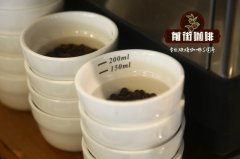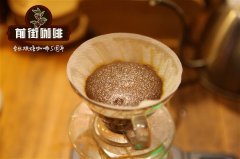Huila Huilan Timana Timana Micro-production area in Ulla Province, Colombia | small farmers produce Castillo,

Professional coffee knowledge exchange more coffee bean information please follow the coffee workshop (Wechat official account cafe_style)
Huila Huilan Timana Timana Micro production area in Ulla Province, Colombia | small farmers produce Castillo, bourbon and Kaddura flavors?
Colombia is the third largest coffee producer in the world, and coffee is produced almost everywhere, but in recent years, the southern region has outweighed the north, and the famous Nalinglong Torimaula is a good producer. Small farmers' land is no more than 10 Murray 15 hectares, coffee will be on the elevated bamboo bed when dry, and there will be an anti-UV awning above, and there will be a large circulating fan to maintain ventilation in the drying room for no more than 18 days. The humidity of coffee will be measured every day. Small farmers believe that on this earth's climate, soil, temperature, and picking maturity and proper care. To a large extent, it contributes to the taste of some coffee, comprehensively collect farm data and make suggestions from good cup testers, consumers put forward their favorite taste, and finally improve the good farm. This is the way of fine coffee in front of Colombia.
The three Codiera mountains in Colombia run north and south, extending into the Andes. Local coffee farmers grow coffee along the highlands of these mountains, with diverse climatic production conditions; and because of changes in topography and altitude, a large part of Colombia's coffee industry is produced by small farmers. However, unlike the coffee-producing countries in Central America, which are mostly classified by the altitude of their growth, Colombian coffee is distinguished by the size of the bean-shaped mesh, of which the Supremo grade above 17 mesh is the largest, and the next grade is the 16-mesh EXCELSO EXTRA. Vera province, located in the southern part of the Central Mountains in southern Colombia, is the country's most famous boutique coffee producing area. This area is a hilly land surrounded by mountains, planted more than 1500 meters above sea level, where the most important rivers in Colombia meet, bringing abundant water resources and moisture. Contrary to the general impression that a large amount of Colombian coffee is balanced and smooth, the fine Goran products produced by many small farmers in micro batches are actually very characteristic of the flavor of the producing area. In recent years, with the attention to the quality of coffee and the demand for fine coffee in the international market, the original bean size grading system has been gradually abandoned to micro-batch (Micro-regional selections) provided by small farmers in micro-production areas, with dozens of small farmers providing their unit harvest into a micro-batch to sell, and because of this, they have more opportunities to measure by batch-by-batch cup. Directly pick out a lot of high-quality specific smallholder coffee.
Colombia established the National Coffee Management Association in 1927 to regulate the quality of coffee and to improve the certification of coffee quality and its producing areas, the Colombian coffee trademark, which is composed of Juan Valdez, mule and Columbia Mountain, meets the certification standards, that is, it can be sold as a sign of quality and producing areas. The Timana micro-producing area is located in the Andes of Colombia, where the good climate provides a good environment for growing coffee. The main varieties are Colombian Tibica and Kaddura, and several small farmer batches have certification with forest protection.
Flavor description:
The sweetness of forage, wheat and caramel is mild and smooth, with fruity notes on the finish.
Property Characteristics: farm characteristics
Name of Farm Farm: Timan á Timana
Farmer Farm owner: Various small producers different kinds of small farmers
Region producing area: Huila Ulla
Country countries: Colombia Colombia
Farm Size Farm area: 2.8Hectares ha
Altitude altitude: 1600 m
Coffee Characteristics: coffee characteristics
Variety varieties: Caturra Kaddura, Typica Tibica, Bourbon bourbon, Castillo
Processing System treatment: Fully washed and sun dried washing and drying in the grain drying field
Flowering period flowering period: September-October September to October
Harvest period harvest time: March-July March to July
Appearance appearance:. 16-18 mesh
Grade level: 1 Speciality Grade
Top Jury Descriptions judge's comment: the baking degree measured by the cup for 60 seconds at the beginning of the first explosion (Cinnamon)
Aroma aroma / flavor flavor: peanut, drupe, chocolate, caramel, pineapple, banana, caramel
Acid quality: plums, plums, oranges, acid value is not fine and coarse
Complex complexity and other other: sweet flowers, melons and fruits, balanced taste, low complexity, sweet brown sugar.
Qianjie recommended cooking:
Filter cup: Hario V60
Water temperature: 90 degrees
Degree of grinding: small Fuji 3.5
Cooking methods: the ratio of water to powder is 1:15, 15g powder, the first injection of 25g water, 25 s steaming, the second injection to 120g water cut off, waiting for the powder bed water to half and then water injection, slow water injection until 225g water, extraction time about 2:00
Analysis: using three-stage brewing to clarify the flavor of the front, middle and back of the coffee. Because V60 has many ribs and the drainage speed is fast, it can prolong the extraction time when the water is cut off.
Important Notice :
前街咖啡 FrontStreet Coffee has moved to new addredd:
FrontStreet Coffee Address: 315,Donghua East Road,GuangZhou
Tel:020 38364473
- Prev

Rain forest certified Copan producing area of Guatemala | Water-washed fermented cuckoo (bourbon, Kaddura, Kadu)
Professional coffee knowledge exchange more coffee bean information please follow the coffee workshop (Wechat official account cafe_style) rainforest certified Guatemalan Koban producing area | the flavor of washed fermented cuckoo (bourbon, Kaddura, Kaduai, Pache)? The Koban coffee producing area is located in the Alta Verapaz province of Guatemala, a non-volcanic area full of limestone and clay.
- Next

Illimani, Calanawi, Bolivia| Mamani Family Farm Organic Beans
Professional coffee knowledge exchange More coffee bean information Please pay attention to Coffee Workshop (Weixin Official Accounts cafe_style) Illimani Iimani Mountain, Calanawi Province, Bolivia| Mamani Family Farm Organic Bean Flavor? Bolivia is a landlocked country known as the ancient plateau, coffee is mainly produced in the plateau at an altitude of 1,200 2,000 meters, the main origin for the north Cara
Related
- Detailed explanation of Jadeite planting Land in Panamanian Jadeite Manor introduction to the grading system of Jadeite competitive bidding, Red bid, Green bid and Rose Summer
- Story of Coffee planting in Brenka region of Costa Rica Stonehenge Manor anaerobic heavy honey treatment of flavor mouth
- What's on the barrel of Blue Mountain Coffee beans?
- Can American coffee also pull flowers? How to use hot American style to pull out a good-looking pattern?
- Can you make a cold extract with coffee beans? What is the right proportion for cold-extracted coffee formula?
- Indonesian PWN Gold Mandrine Coffee Origin Features Flavor How to Chong? Mandolin coffee is American.
- A brief introduction to the flavor characteristics of Brazilian yellow bourbon coffee beans
- What is the effect of different water quality on the flavor of cold-extracted coffee? What kind of water is best for brewing coffee?
- Why do you think of Rose Summer whenever you mention Panamanian coffee?
- Introduction to the characteristics of authentic blue mountain coffee bean producing areas? What is the CIB Coffee Authority in Jamaica?

